This post is Part III of my short blog series on my trip to the Rías Baixas (“Lower Estuaries”), a coastal region in Galicia, Spain, in September 2019. Make sure to read Part I and Part II as well. The Rías Baixas are made up of four rías: Ría de Muros e Noia, Ría de Arousa, Ría de Pontevedra, and Ría de Vigo. Each blog post will cover each ría in detail so that you can plan your own road trip around this beautiful, unique area of the world!
In my last post on Galicia, I detailed my adventures around Ría de Arousa, the largest estuary in the Rías Baixas. Its peninsulas are lovely and the wine is excellent. However, the further south you go down the rias, the larger the towns tend to become. Perhaps these towns are more touristy, however, they also provide important historical and cultural spots. This is why it is so difficult to just pick one ria to explore: they are all incredibly unique. From north to south, you hit Ría de Muros e Noia, Ría de Arousa, and now Ría de Pontevedra.
Ría de Pontevedra
The shores of Ría de Pontevedra are quite developed, therefore it should not come as a surprise to learn that this is the heart of beach tourism in the Rías Baixas. We’re not exactly resort-type people, so we tended to avoid the major tourist beaches. However, the location of our apartment in Raxó could not have been better. It is in the middle of the coast and is also near some larger towns and roads for further travelling access. We also had a beautiful view of the ria — you could even see some mussel beds out on the water.
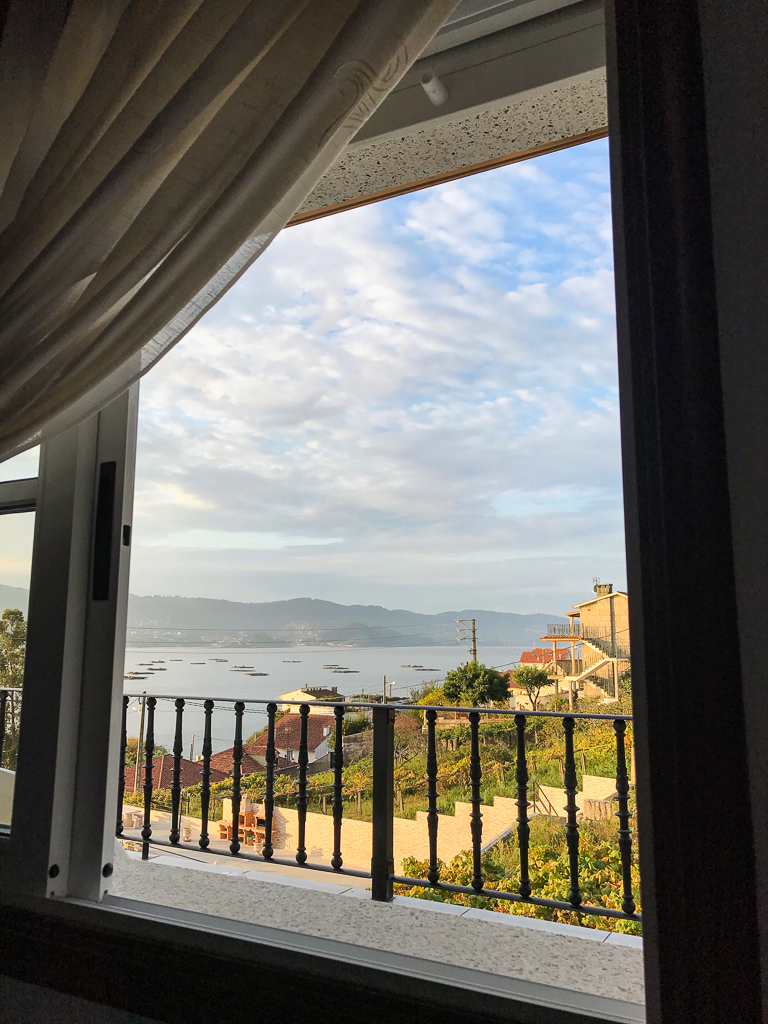
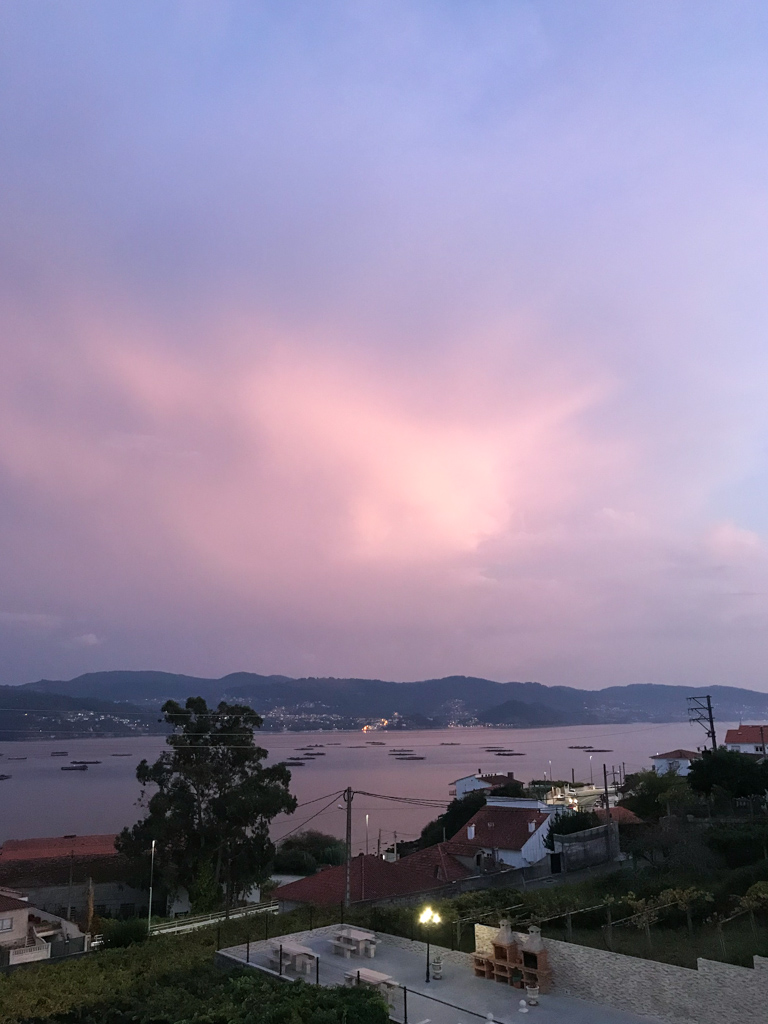
Combarro
In my last post on Galicia, I mentioned that Galicia has a steep history is mysticism. More rural areas are influenced by a history of witchcraft. Witches, called meigas in Galician, have supposedly permeated the area for centuries. Such witches are known for their knowledge and use of medicinal herbs and other remedies. They may also not be so nice, and curse you! To protect yourself there is a traditional amulet called a figa (much like the purpose of the evil eye amulet), or alternatively, you can gesture the figa hand symbol yourself.
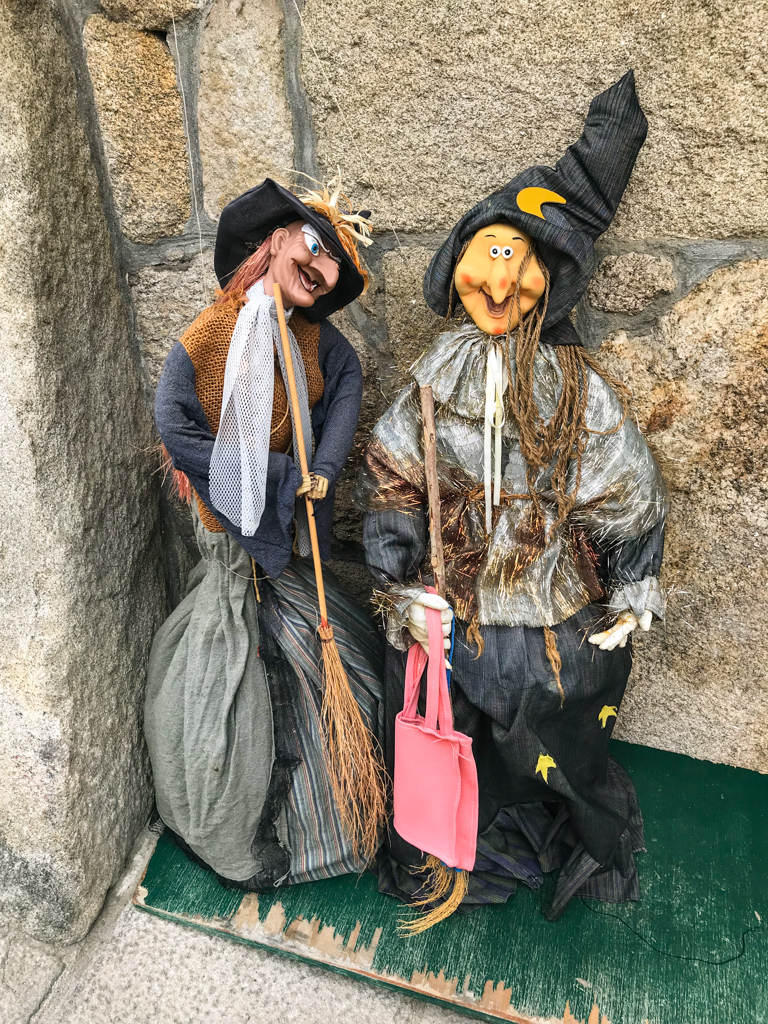


You can see such mysticism in every traditional town in Galicia if you just look closely and pay attention. Perhaps one of the most popular stops in the Rías Baixas is the town of Combarro, just a five-minute drive up the ria from Raxó. The reason is that it is a preserved, traditional Galician village. Here, you can really immerse yourself in a bygone era. The town is incredibly charming and tourists are drawn here to experience the historic, granite-paved streets that date back to the 1700s. Combarro has several traditional Galician houses with covered porches, wrap-around balconies and tiny gardens and flower planters. And yes, a few witch figures were here and there.
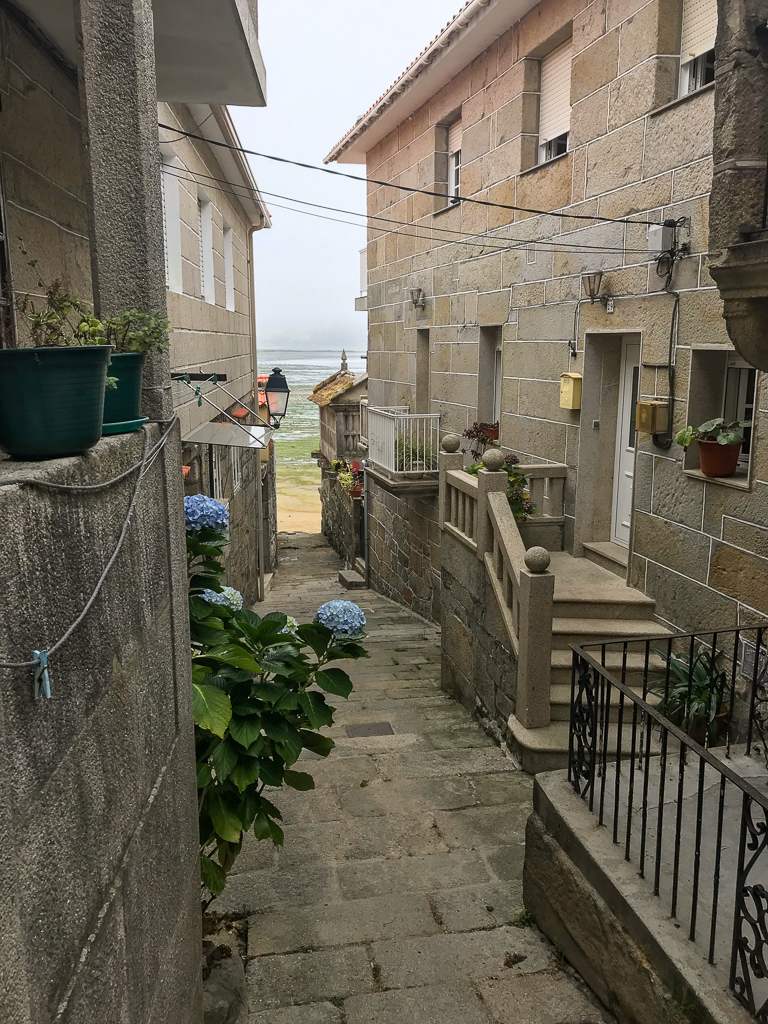
 Combarro is also a great place to go see the traditional horreos. These structures made out of wood or stone date back to the 15th century (some even say the 13th century) and were used as a storage unit for crops, most often for grains. These granaries were built raised off the ground to prevent rodents from getting inside. They also have slots to allow for ventilation. You’ll see them all over the place in Galicia as almost every house would have had an horreo. However, no two horreos are alike as there vastly different decorative aspects.
Combarro is also a great place to go see the traditional horreos. These structures made out of wood or stone date back to the 15th century (some even say the 13th century) and were used as a storage unit for crops, most often for grains. These granaries were built raised off the ground to prevent rodents from getting inside. They also have slots to allow for ventilation. You’ll see them all over the place in Galicia as almost every house would have had an horreo. However, no two horreos are alike as there vastly different decorative aspects.

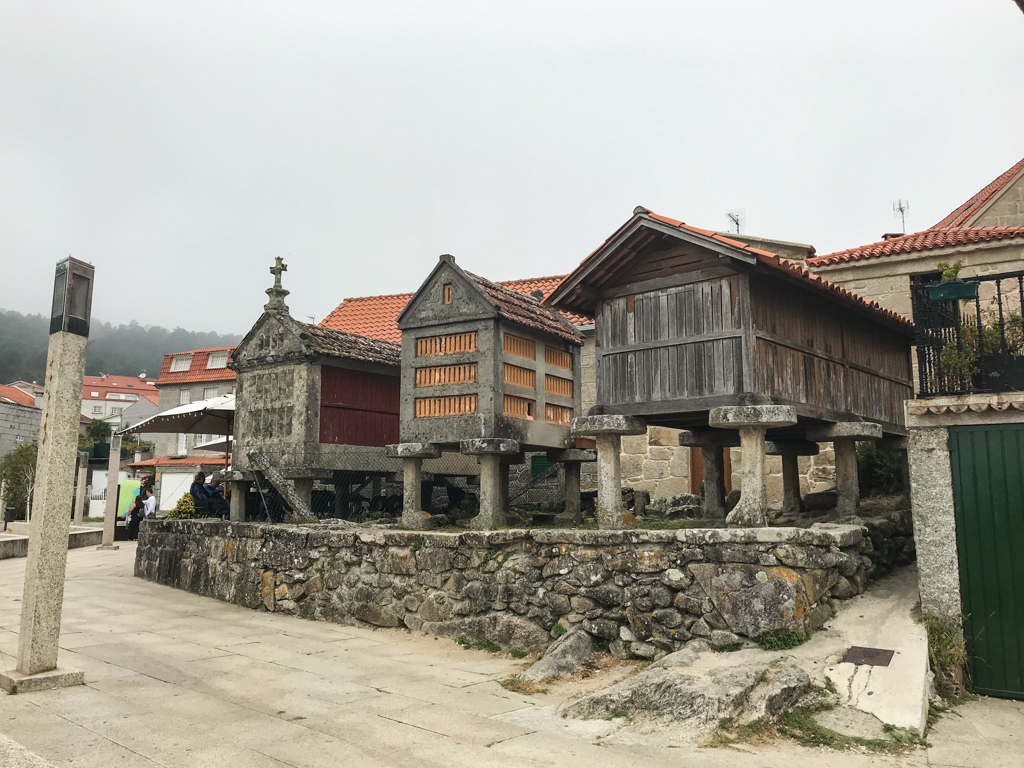
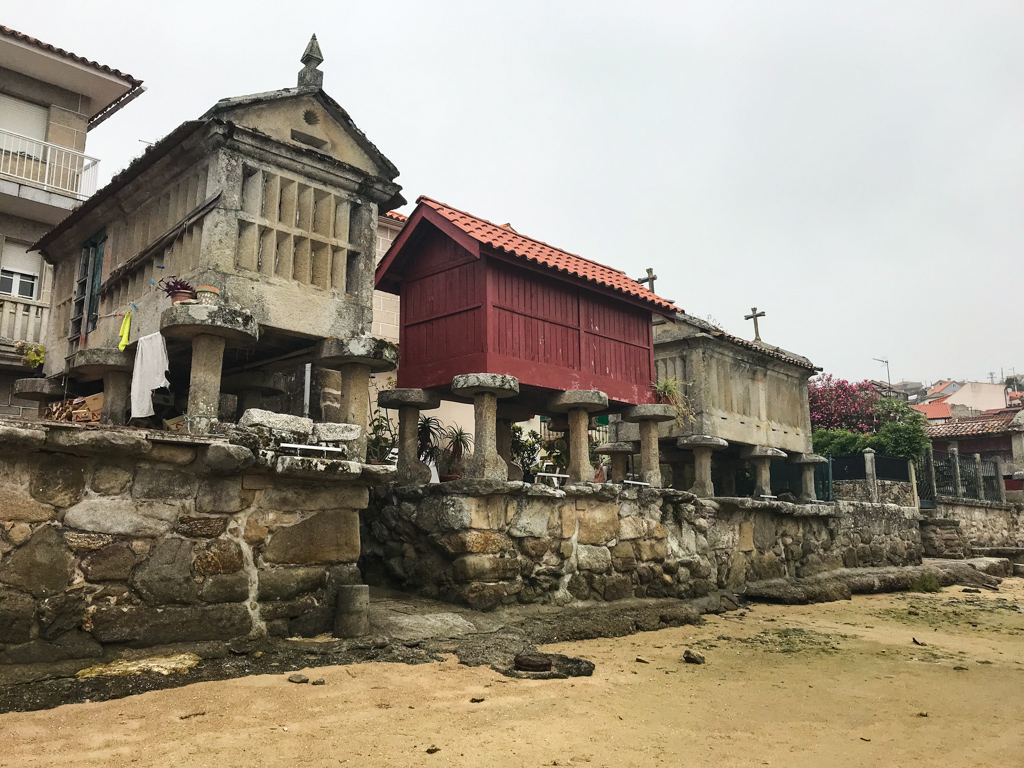
I recommend walking one direction along the shore and walking the other direction through the town itself. We ended up in Combarro on a very eerie day weather-wise, but I loved the ambience! It really matched the stories I had just heard about witches in Galicia — spooky!

 Pontevedra
Pontevedra
A further 15 mins up to the end of the ria is the ria’s capital, Pontevedra, which is also the capital of the whole Rías Baixas. It is just as historically significant as the larger, more well-known Santiago de Compostela.

 Walking through the main square, we ran into a chestnut roaster. An autumnal traditional in Spain is to eat roasted chestnuts. We ended buying a huge cone, but it was such a treat!
Walking through the main square, we ran into a chestnut roaster. An autumnal traditional in Spain is to eat roasted chestnuts. We ended buying a huge cone, but it was such a treat!
 Food-wise, we had two great experiences. One evening we were not super hungry, so we opted for a cheese night. We went to Casa Verdún and proceeded to try so many different types of cheeses. If you haven’t been to figure out already, Galicia is a very rural place and some of the most typical scenes are cows grazing in meadows. Therefore, it is unsurprising that some of the most delicious cheeses are made here! Galicia actually has four kinds of cheese recognized as Protected Designations of Origin, meaning that the cheeses must be traditionally and entirely manufactured (prepared, processed and produced) within the specific region and thus acquire unique properties. Basically, these cheeses are particularly special and unique.
Food-wise, we had two great experiences. One evening we were not super hungry, so we opted for a cheese night. We went to Casa Verdún and proceeded to try so many different types of cheeses. If you haven’t been to figure out already, Galicia is a very rural place and some of the most typical scenes are cows grazing in meadows. Therefore, it is unsurprising that some of the most delicious cheeses are made here! Galicia actually has four kinds of cheese recognized as Protected Designations of Origin, meaning that the cheeses must be traditionally and entirely manufactured (prepared, processed and produced) within the specific region and thus acquire unique properties. Basically, these cheeses are particularly special and unique.
At the market, we tried tetilla cheese melted on Galicia-style octopus! I had been avoiding trying this dish for days, even though I saw it as an option almost everywhere I went. Though I was sceptical, I ended up loving it!

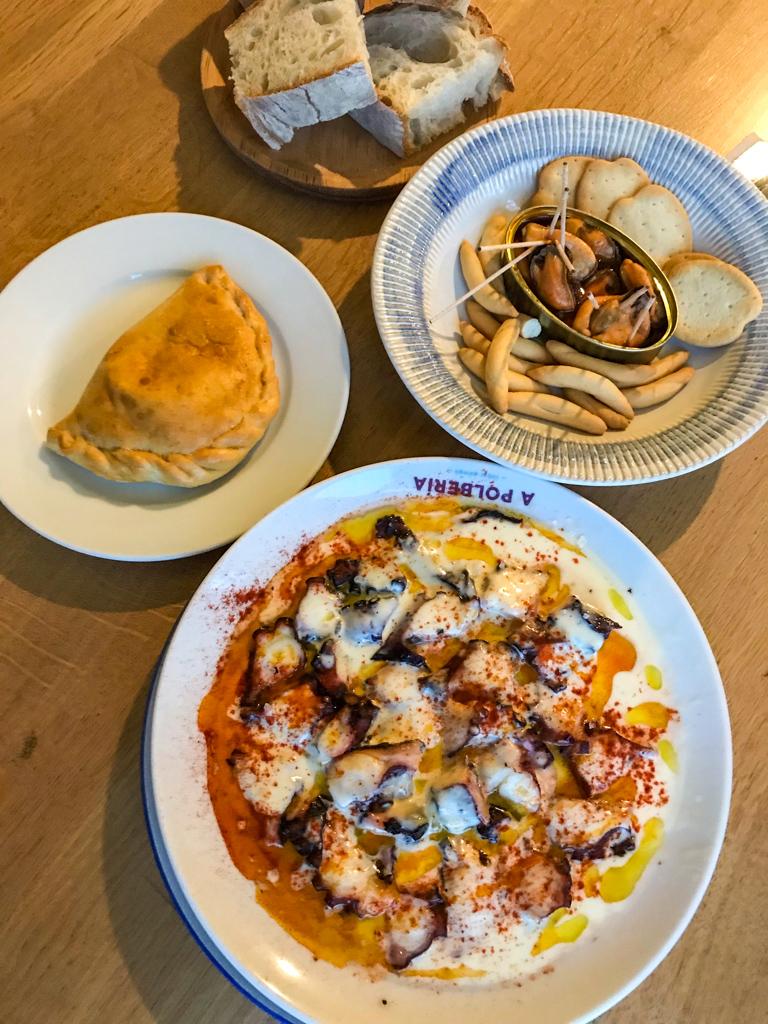
Sanxenxo
Back towards our apartment, we spent many nights wandering around the town of Sanxenxo, located just 10 minutes from Raxó. Sanxenxo is well-known for its beautiful beach as well as its extensive restaurant scene along the boardwalk.

 We decided to take advantage of the food scene by eating out at Restaurante Carmen. This was actually our first meal in the Rías Baixas, so we went all out with scallops, razor clams and fish.
We decided to take advantage of the food scene by eating out at Restaurante Carmen. This was actually our first meal in the Rías Baixas, so we went all out with scallops, razor clams and fish.
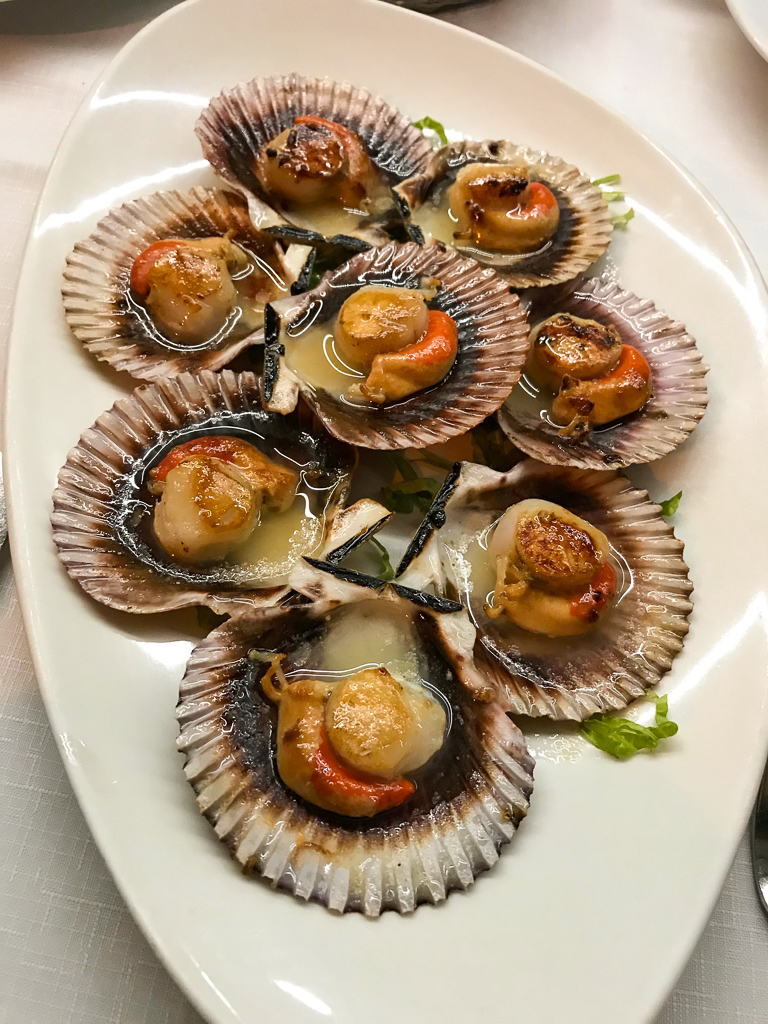
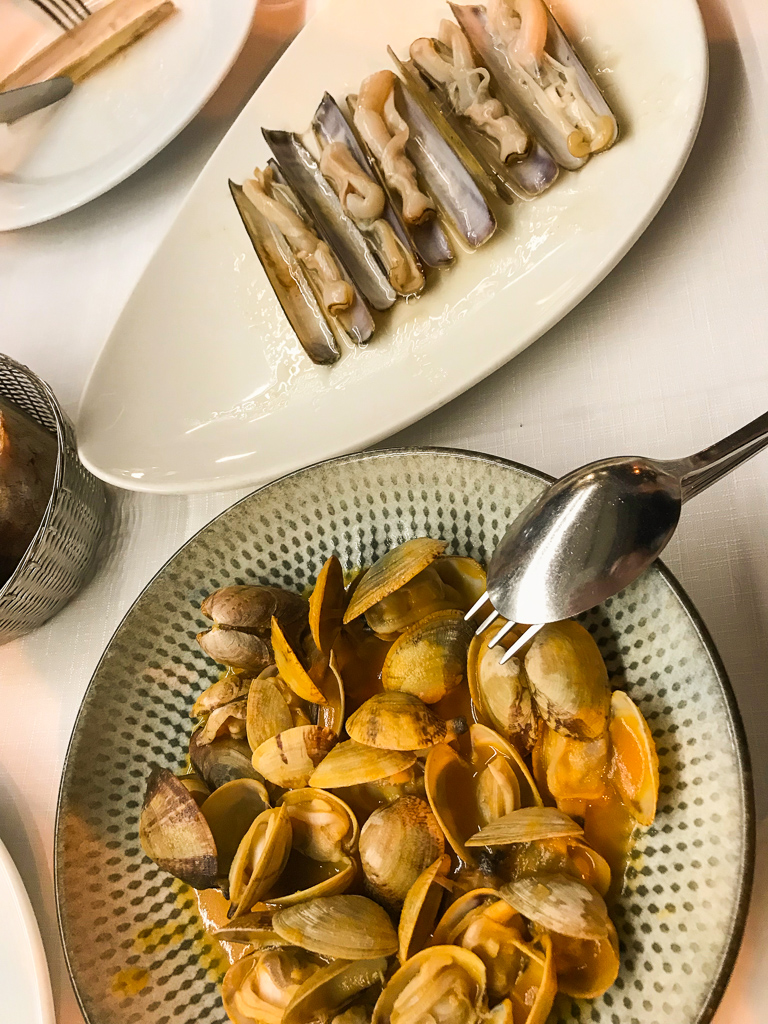
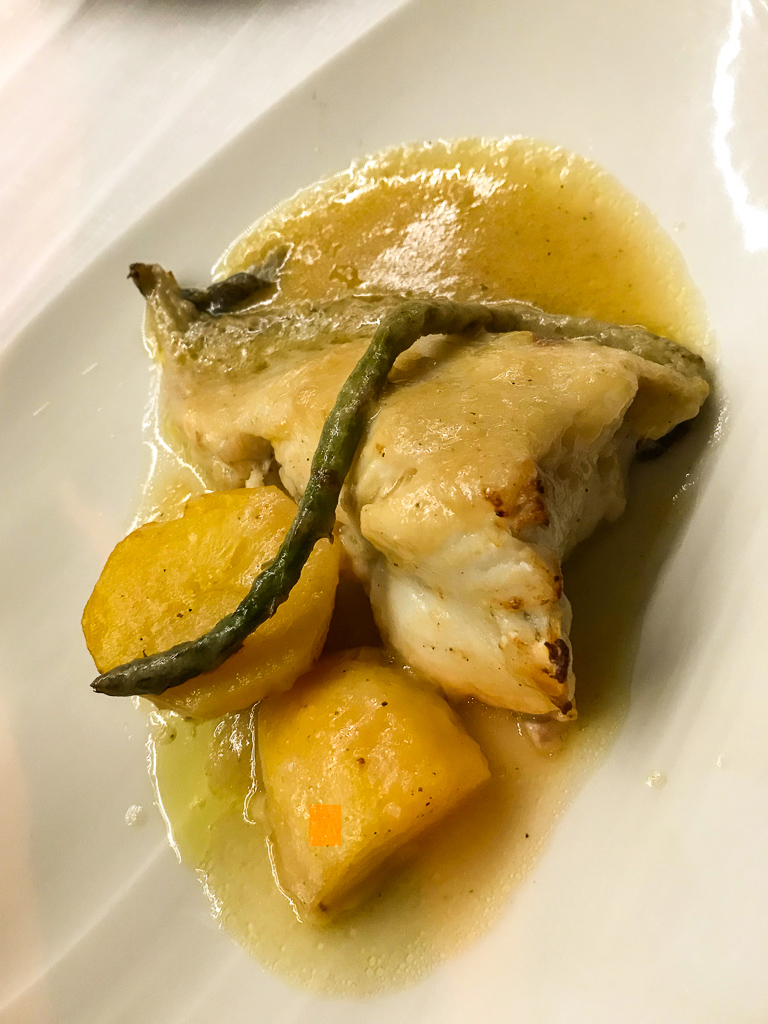
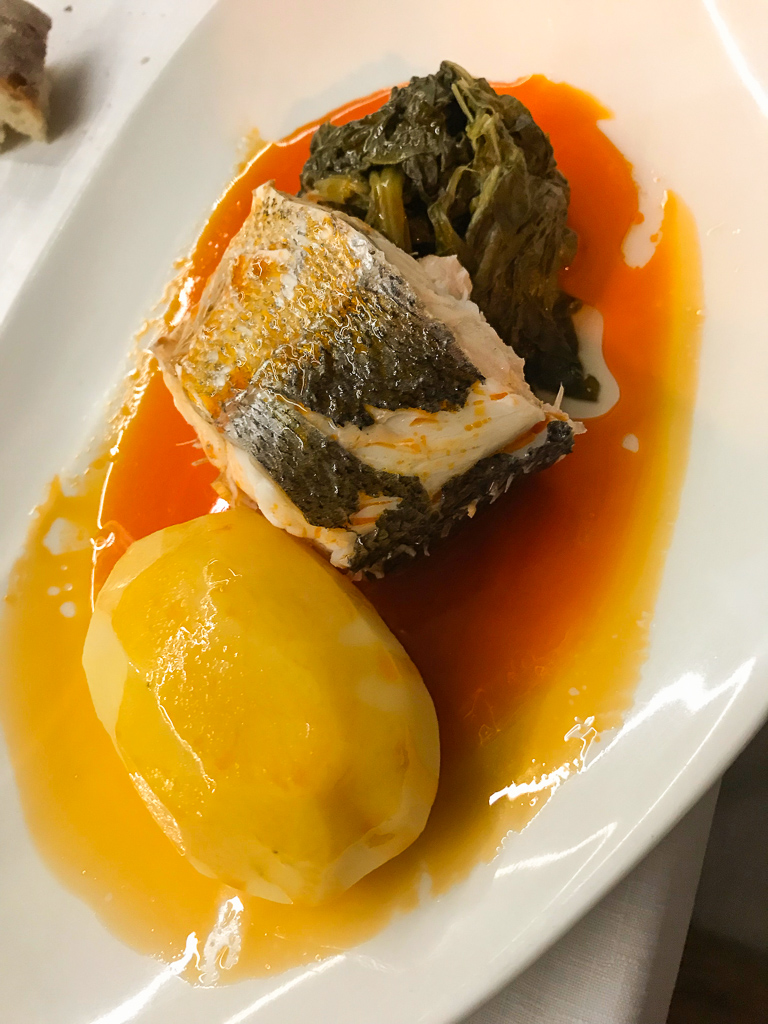
Looking at all that seafood and fish I’m craving such a meal once again! The food is truly incomparable to anything I’ve tasted elsewhere in the world.
Stay tuned for the last and final instalment in this Rías Baixas blog post series!

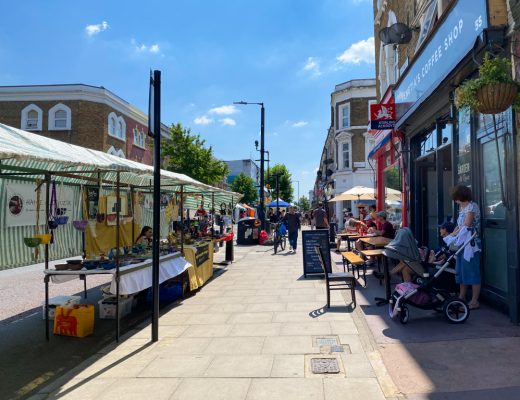
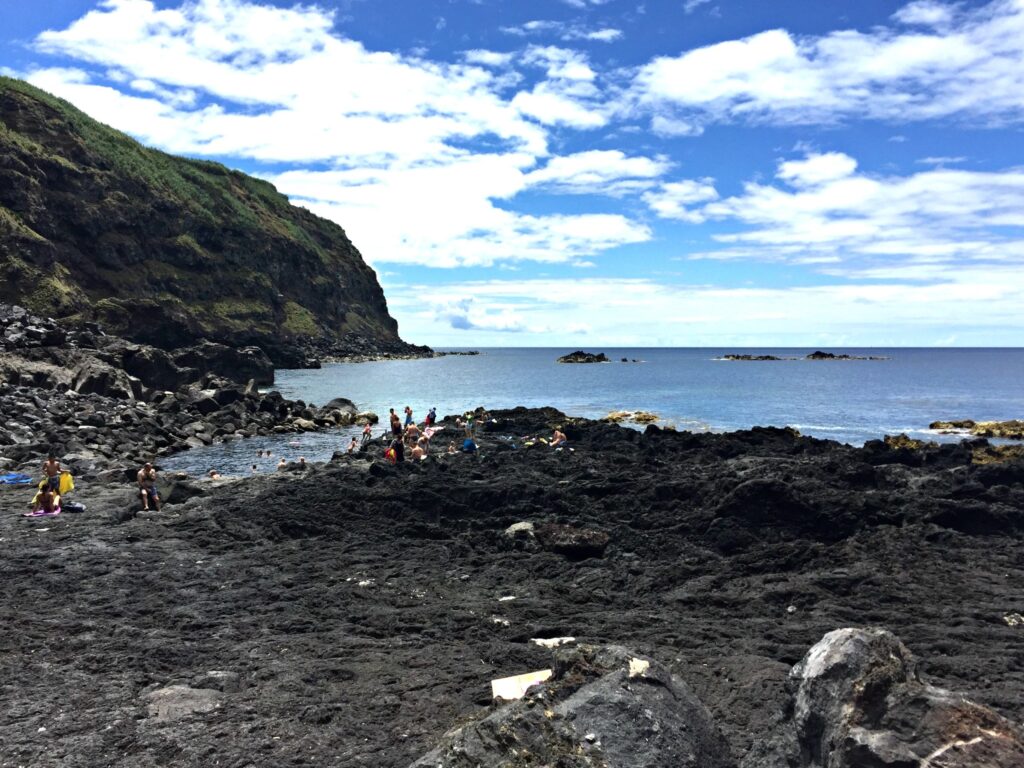

1 Comment
Loved this, here now! Thank you